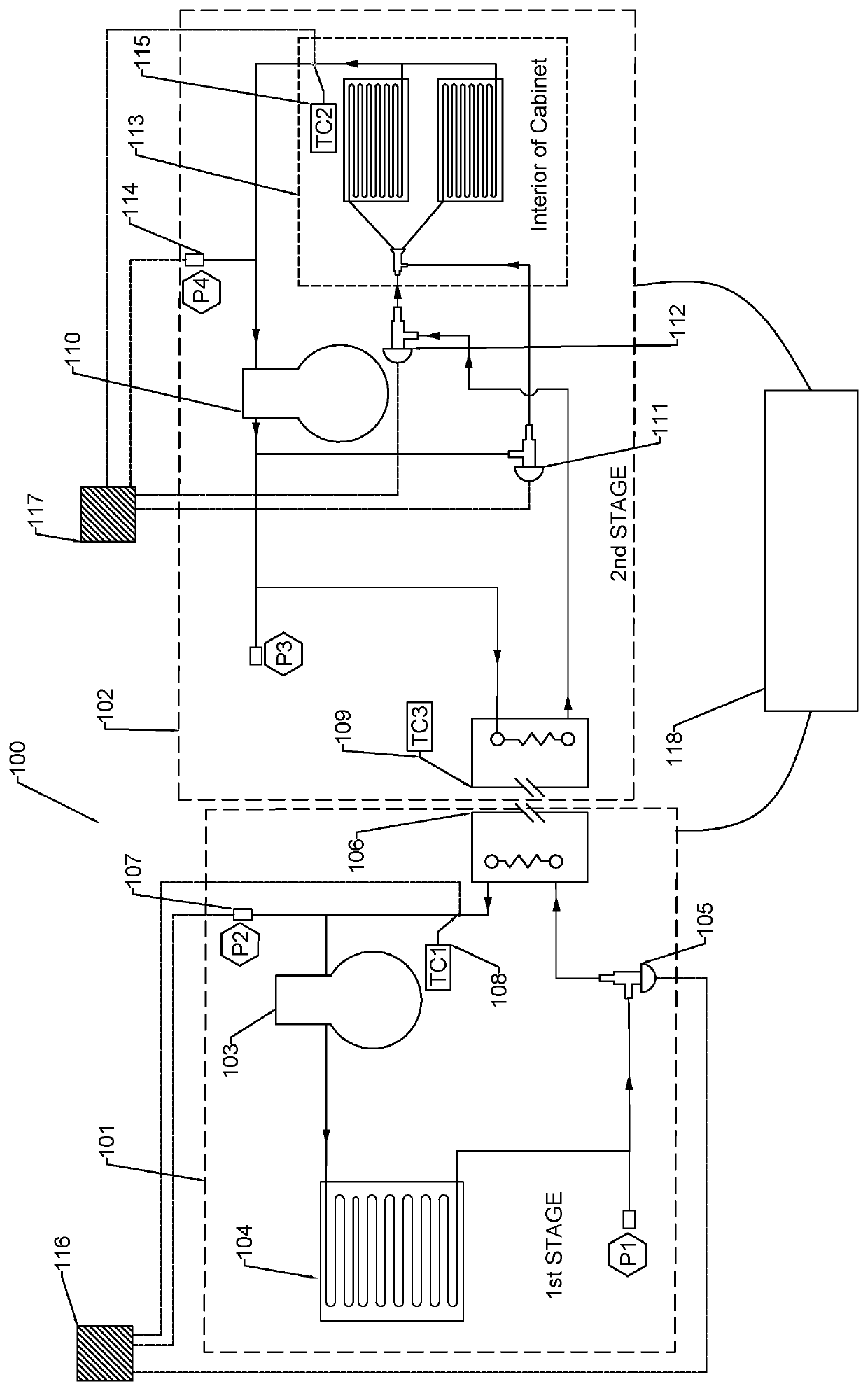System and method of hot gas defrost control for multistage cascade refrigeration system
a refrigeration system and cascade technology, applied in refrigeration components, mechanical equipment, lighting and heating apparatus, etc., can solve the problems of difficulty in controlling temperature and refrigerant flow during the defrost process, inability to provide tubes for heater rods, and inability to meet the requirements of use, so as to reduce the variability, increase the ease of design and implementation, and reduce the effect of ice accumulation
- Summary
- Abstract
- Description
- Claims
- Application Information
AI Technical Summary
Benefits of technology
Problems solved by technology
Method used
Image
Examples
example
[0022]The present invention is more particularly described in the following non-limiting example, which is intended to be illustrative only, as numerous modifications and variations therein will be apparent to those skilled in the art.
Example—Hot Gas Defrost Cycle Operation
[0023]In this example, refrigerant R-404a is used in the first stage, and refrigerant R-508B is used in the second stage, given a design criterion where a refrigeration system must operate at −80° C. in the evaporator enclosure. As during normal operating conditions, the compressor operating conditions during defrost are critical to performance and longevity. As such, operational limits exist to which we must adhere. The upper limit of compressor operation can vary but is generally set by compressor manufacturers and industry experts to be 300PSIA of discharge pressure and a compression ratio of around 10:1 between suction pressure and discharge pressure. If operating at 300PSIA, any liquid R-508B that exists in t...
PUM
 Login to View More
Login to View More Abstract
Description
Claims
Application Information
 Login to View More
Login to View More - R&D
- Intellectual Property
- Life Sciences
- Materials
- Tech Scout
- Unparalleled Data Quality
- Higher Quality Content
- 60% Fewer Hallucinations
Browse by: Latest US Patents, China's latest patents, Technical Efficacy Thesaurus, Application Domain, Technology Topic, Popular Technical Reports.
© 2025 PatSnap. All rights reserved.Legal|Privacy policy|Modern Slavery Act Transparency Statement|Sitemap|About US| Contact US: help@patsnap.com

